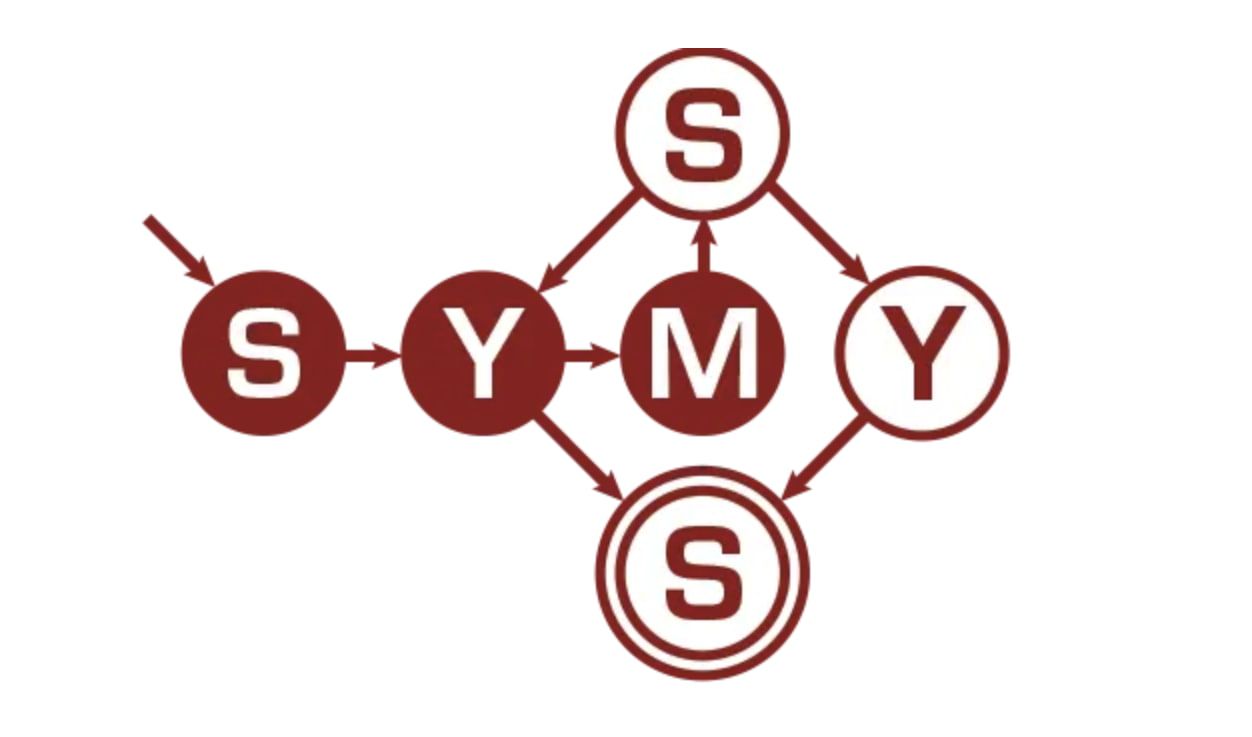Introduction to Symbolic Systems and Machine Learning:

Symbolic Artificial Intelligence (AI):
Symbolic AI is a unique approach in AI research characterized by its reliance on high-level symbolic representations of problems, logic, and search. Unlike other AI techniques, such as machine learning and deep learning, Symbolic AI does not require vast amounts of training data.
Machine Learning (ML):
ML is a data-driven approach that learns patterns from data without explicit programming. ML is the process of training a piece of software, called a model, to make valuable predictions or generate content from data.
Symbolic AI is a unique approach in AI research characterized by its reliance on high-level symbolic representations of problems, logic, and search. Unlike other AI techniques, such as machine learning and deep learning, Symbolic AI does not require vast amounts of training data.
Machine Learning (ML):
ML is a data-driven approach that learns patterns from data without explicit programming. ML is the process of training a piece of software, called a model, to make valuable predictions or generate content from data.
Key Characteristics of Symbolic Machine Learning

Symbolic machine learning stands out due to three main features that enhance human decision-making:
1. Learning from Limited Data: Unlike traditional machine learning methods that require vast amounts of data, symbolic machine learning can build accurate predictive models from minimal data.
2. Explainability: The models generated by symbolic machine learning can be easily understood and articulated in human language, making them more accessible and trustworthy.
1. Learning from Limited Data: Unlike traditional machine learning methods that require vast amounts of data, symbolic machine learning can build accurate predictive models from minimal data.
2. Explainability: The models generated by symbolic machine learning can be easily understood and articulated in human language, making them more accessible and trustworthy.
3. Incorporating Human Feedback: These systems are designed to learn and adapt based on feedback from human users, making them more personalized and effective over time.
Overcoming Data Limitations
Traditional deep learning and statistical machine learning thrive on large datasets to perform tasks such as classification and specific problem-solving. However, symbolic machine learning excels in scenarios where data is scarce. It can derive high-level decision-making models without the need for extensive data, making it a powerful tool in various applications.
Overcoming Data Limitations
Traditional deep learning and statistical machine learning thrive on large datasets to perform tasks such as classification and specific problem-solving. However, symbolic machine learning excels in scenarios where data is scarce. It can derive high-level decision-making models without the need for extensive data, making it a powerful tool in various applications.
Real-World Applications: Urban Mobility
An exemplary application of symbolic AI is in urban mobility. Imagine navigating from point A to point B in a city without knowing the best route. Symbolic AI systems can offer personalized suggestions based on general criteria like the shortest path, avoiding tolls, or minimizing payments. These systems can learn and adapt to an individual's preferences, making daily commuting decisions more tailored to personal needs.
Superior Personalization with Symbolic AI
Research has demonstrated that symbolic AI can outperform traditional machine learning by providing truly personalized recommendations. By learning from fewer examples, symbolic AI can extract generalizable models from individual behaviors, leading to more accurate and personalized outcomes.
The fundamental principles of Symbolic Systems and Machine Learning:
The critical differences between Symbolic Systems and Machine Learning:
Hybrid Systems
Applications and Use Cases:
Symbolic Systems:-
Medical Diagnosis: Symbolic systems are extensively used in medical expert systems to diagnose diseases based on patient symptoms, medical history, and lab results. For instance, a symbolic system might analyze symptoms like fever, cough, and fatigue to suggest potential illnesses, aiding doctors in making informed decisions.
Legal Reasoning: In the legal field, symbolic AI assists professionals by analyzing legal texts, case law, and statutes. Symbolic systems can provide legal advice, help with contract analysis, and predict legal outcomes. These systems offer valuable support in navigating complex legal landscapes by encoding legal knowledge into logical rules.
Automated Theorem Proving: Symbolic reasoning is pivotal in formal logic and mathematics. Automated theorem provers leverage symbolic methods to prove mathematical theorems, significantly advancing research and education in mathematical sciences.
Machine Learning:-
Image Recognition: Machine learning models, particularly convolutional neural networks (CNNs), excel at recognizing objects, faces, and image patterns. Image recognition applications include self-driving cars identifying pedestrians and traffic signs, medical imaging detecting tumors, and content moderation flagging inappropriate images.
Natural Language Processing (NLP): Machine learning techniques are at the heart of NLP tasks such as sentiment analysis, machine translation, and chatbots. Recurrent neural networks (RNNs) and transformer models like BERT learn contextual representations for text, enabling machines to understand and generate human language with remarkable accuracy.
Recommendation Systems: ML algorithms power recommendation systems by analyzing user behavior, such as browsing history and purchase patterns, to suggest products, movies, or music. Collaborative filtering and matrix factorization are commonly employed to enhance user experience by providing personalized recommendations.
Advantages and Disadvantages of Symbolic Systems and Machine Learning
Symbolic Systems:-
Advantages:
Advantages:
• Explainability: Symbolic systems offer clear, human-readable rules and logic, allowing experts to understand and interpret the reasoning behind decisions easily. This transparency fosters trust and accountability.
• Transparency: The explicit representation of knowledge in symbolic systems clarifies how conclusions are reached, enhancing transparency.
• Precise Reasoning: Symbolic AI follows deterministic rules, ensuring precise and reliable reasoning, which is particularly valuable in fields requiring high accuracy.
Disadvantages:
• Scalability Issues: Symbolic systems often struggle with scalability. Managing and updating rules becomes increasingly complex and unwieldy as the knowledge base grows.
• Brittleness: These systems can be sensitive to minor changes. A tiny rule alteration can lead to unexpected and undesirable behavior, making them less robust.
• Manual Knowledge Engineering: Creating and maintaining the rules in symbolic systems requires significant human effort. This process is time-consuming and prone to errors, limiting the system's efficiency and adaptability.
Machine Learning
Advantages:
• Scalability: Machine learning models excel at handling large datasets efficiently. They can process and learn from vast amounts of data, making them highly scalable.
• Adaptability: ML models can adapt to new information and changing environments, continuously improving performance.
• Handling Large Datasets: Machine learning techniques are particularly effective when dealing with massive data volumes, uncovering patterns and insights that human analysts might miss.
Disadvantages:
• Black-Box Nature: Many machine learning models, especially neural networks, are often seen as black boxes due to their lack of interpretability. This makes it difficult to understand how decisions are made.
• Need for Large Data: Effective ML model training requires substantial data. Insufficient data can lead to poor performance and unreliable predictions.
• Less Interpretability: Unlike symbolic systems, machine learning models do not provide explicit rules for decision-making, making it challenging to explain the rationale behind their outputs.
Conclusion:
The synergy between symbolic reasoning and machine learning holds immense potential for transforming the field of artificial intelligence. By combining the explicit, rule-based logic of symbolic systems with the adaptive, data-driven capabilities of machine learning, we can create hybrid models that surpass the limitations of each approach. This integration is not merely a theoretical advancement but a practical pathway to developing AI systems that are more versatile, intelligent, and robust.
Moreover, the integration of symbolic reasoning and machine learning can drive innovation in areas such as education, where AI can provide personalized learning experiences and instant feedback, and in environmental monitoring, where it can predict and mitigate the impacts of climate change. By harnessing the strengths of both approaches, AI systems can offer more reliable and context-aware solutions, enhancing their usefulness across diverse fields.
Our Office
GREER
South Carolina, 29650,
United States
South Carolina, 29650,
United States


